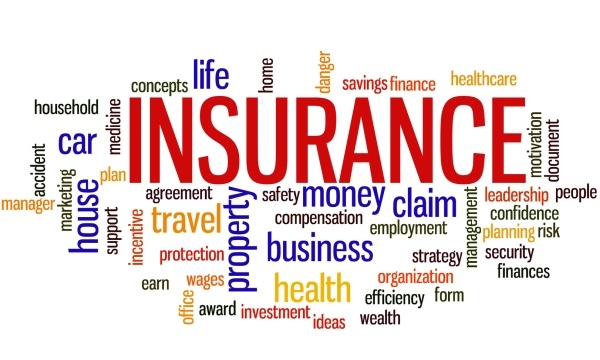The Bottom Line
Small business is important to Central Oregon, and to Mid Oregon. Find tips and resources for business, and information about Mid Oregon’s commercial services and business members.

Vote and Make a Difference for FAN!
Vote Love My Credit Union Campaign
As part of the “Love My Credit Union Campaign”, Mid Oregon Credit Union has created a video about our school community involvement which could win FAN (Family Access Network) up to $26,000 this Fall if we get the most votes. You can Make a Difference for FAN!
The Love My Credit Union® Campaign is a nationwide video contest that invites credit unions and credit union support organizations to create a short video showcasing their good deeds and charitable work. Now it’s up to those reading this, to vote for your favorite (hint: Mid Oregon CU’s video and FAN!) and help charities across the country receive donations of up to $122,500. Plus, you could win a $500 gift card and a $500 donation to the charity of your choice just for voting! Vote every day now – December 16, 2016.
Here’s how you can help:
VOTE- EVERY DAY!
- Visit http://www.votelovemycu.org/MidOregonCUForFAN, and watch the 90 second video. Vote every day through December 16th. You register just once (today) by clicking the “Vote” button, confirm your registration through your email, and every time after you just enter your email address to vote.
- Set up a reminder so you vote every day
- *** Each vote enters you into a sweepstakes for a $500 Visa Gift Card and a $500 donation to the charity of your choice!
SHARE WITH YOUR FRIENDS, FAMILY, ETC.
- On the web page is a button to easily share directly to Facebook or Twitter
- Share from your other social media platforms
- Email the link above to your contacts
Thank you for helping make an impact for our kids, families and schools!
Contest’s First Year in 2015
In 2015, $105,000 was donated to local charities on behalf of nine winning credit unions nationwide. This year, there will be more donations to charity and more ways to win. The Love My Credit Union® Campaign will award up to $122,500 to charities nationally on behalf of the winning videos submitted by credit unions and credit union support organizations!
Details about Awards
October Winners
Four $5,000 donations on behalf of winning credit unions with the top votes in each asset size category as of October 31, 2016
November Winners
Four $5,000 donations on behalf of winning credit unions with the top votes in each asset size category as of November 30, 2016
December Winners
One $15,000 donation on behalf of the grand prize winning credit union with the most overall votes as of December 16, 2016
One $15,000 donation on behalf of the grand prize winning credit union support organization with the most overall votes as of December 16, 2016
Up to 50 $1,000 state-level donations on behalf of the credit union in each state with the most overall votes as of December 16, 2016. * Minimum 5 Credit Unions participating in state to award.
Consumer Sweepstakes
The campaign will randomly selected five campaign voters when voting concludes on December 16, 2016 and award each with a $500 gift card plus a $500 donation to the charity of their choice*. Each time you vote you are entered into the sweepstakes to win the consumer prize!
Winners will be announced each month of the campaign from October 1 through December 16, 2016.
*Charity must be a 501c3

Reduce Your Insurance Costs
Do you understand the different parts of your personal auto or home insurance policy and do you know how to choose the best coverage? Equip yourself with a better understanding at this informative workshop. Attend Reduce Your Insurance Costs, a free workshop that will be held on Tuesday, September 27, 2016 at 6:00 p.m. at Mid Oregon Credit Union, 1386 NE Cushing Drive in Bend. Presenter will be John Gould, of Cascade Insurance, a Mid Oregon Credit Union financial partner. To register for this workshop, call (541) 382-1795, or email us at beheard@midoregon.com. Refreshments will be served.
At this workshop, we will discuss the types of coverage that insurance companies offer and talk about possible insurance needs. Additionally, we will look at what affects the price of personal auto or home insurance, how to bring the costs down and how to understand the components of your policy. This includes how rates are determined and what you can do to affect those rates. There are many factors that go into determining your insurance rates and not all have to do with your driving record or loss history.
Understanding the simple basics of insurance will make you confident that the insurance policy you choose will take care of your needs and possibly save you some money!
John joined Cascade Insurance Center in 2011. He brings over 20 years of insurance experience in Central Oregon to the agency. John is a native of Bend, and has witnessed the rapid growth. He is a graduate of the University of Oregon’s business school. Prior to returning to the insurance business, he owned and operated a sports equipment store here in Bend.
John is a property and casualty agent, working with local businesses, as well as personal lines of insurance, such as home and auto. He enjoys helping his clients and prospects find insurance solutions that fit their needs.

Hey, Mom and Dad- What’s a Credit Union?
If your kids are reaching the age where they’re ready to open a savings account, they may be aware that the word “bank” has some negative associations associated with it. But they may see another kind of financial institution, and may ask “Hey, Mom and Dad- What’s a Credit Union?”
The repercussions of the financial recession are still reverberating through the culture, and the reputation of big banks have not fully recovered. So if your eager young savers are wondering why they should trust their hard-earned allowance to a bank, you can explain that a credit union (CU) isn’t a bank.
They may be growing up thinking Mid Oregon is just another bank. But how do you explain to kids that a CU is so much more?
What’s A Credit Union?
Well, a CU is a not-for-profit financial cooperative, so its foundational principles include things like helping the community and educating members. But that’s a difficult concept for a kid to understand.
So keep it simple.
Tell them the credit union is a friendly place where people come together to help each other save and lend money. And unlike a bank, a credit union doesn’t want to take your money and use it to make more money for people far away on Wall Street. Instead, the credit union is there to help them—and their friends and neighbors—make good money decisions.
Ultimately, a credit union exists to make them and their community stronger.
For those who desire to know more details…
What’s a Credit Union- www.mycreditunion.gov
You’ve probably heard of banks, but you might not be as familiar with credit unions. They are financial institutions too, but are not-for-profit organizations owned by all of its members versus for profit organizations owned by a handful or small group of individuals. Credit unions focus on helping their members save and borrow and receive affordable financial services.
Usually, credit unions offer higher savings rates, which is important to young people just starting their savings accounts. Credit unions typically charge lower fees compared to banks and are known for providing personal service and helping members plan for the future.
The credit union philosophy is members helping members. Many members of credit unions like knowing their savings will help other members get mortgages to buy homes and loans for new cars.
Read more about credit unions...
What is a Credit Union- World Council of Credit Unions
Credit unions, called by various names around the world, are member-owned, not-for-profit financial cooperatives that provide savings, credit and other financial services to their members. CU membership is based on a common bond, a linkage shared by savers and borrowers who belong to a specific community, organization, religion or place of employment. CUs pool their members’ savings deposits and shares to finance their own loan portfolios rather than rely on outside capital. Members benefit from higher returns on savings, lower rates on loans and fewer fees on average.
CUs worldwide offer members from all walks of life much more than financial services. They provide members the chance to own their own financial institution and help them create opportunities such as starting small businesses, growing farms, building family homes and educating their children.
What’s the difference between a bank and a credit union?– How Stuff Works-Money
From the outside, banks and CUs seem very similar. They both offer checking and savings accounts, financial products like CDs and specialized accounts, and the rest of the services we’ve come to expect. You drive through teller windows or stop in at a branch, deposit your checks or withdraw money, and occasionally meet with personnel to discuss your financial needs. ATMs, debit and credit cards, loans and mortgages are all on the menu at most banks and credit unions. You give them your money, and they give it back. Right?
But under the surface, the two types of financial institutions couldn’t be more different. You may have noticed how excited and involved credit union (CU) members tend to be with their institutions, or the reputation CUs have for being small, regional or community-oriented.
Read more about the difference between banks and credit unions…
